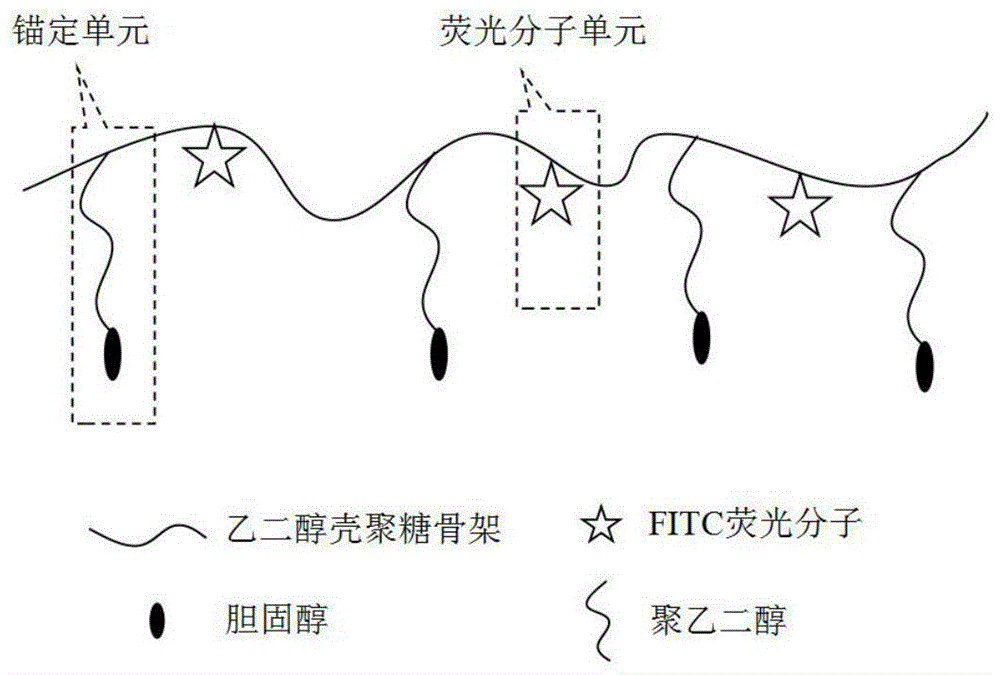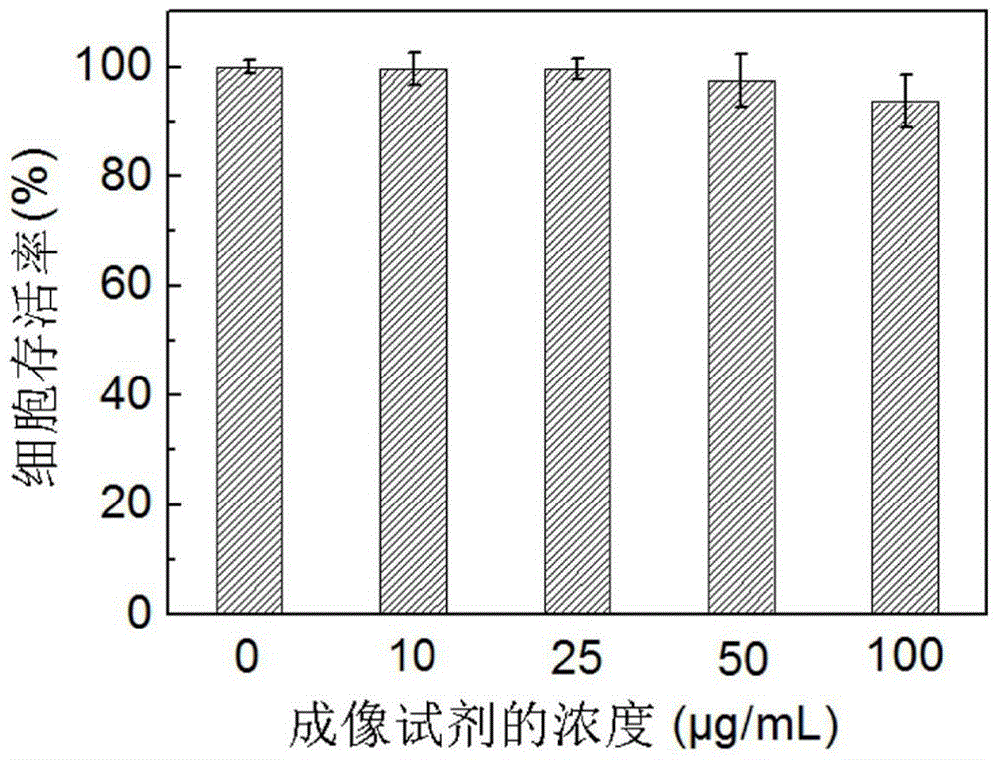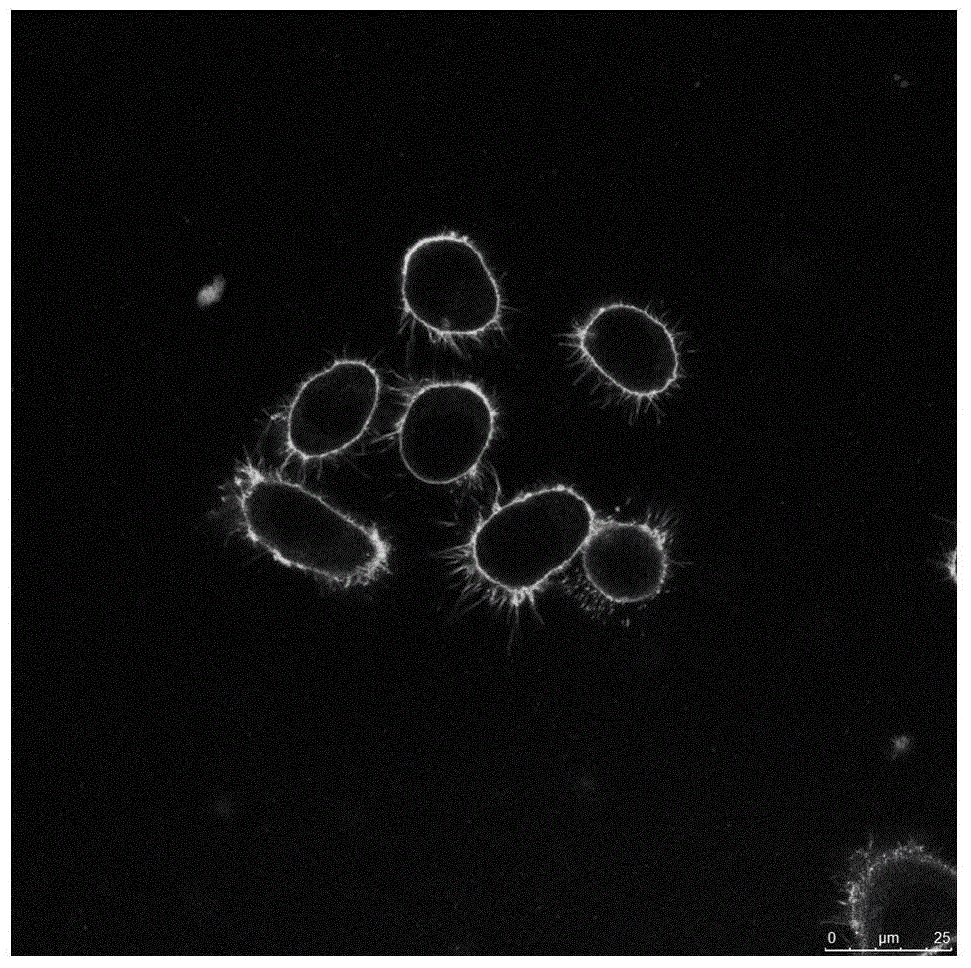A cell membrane fluorescence imaging reagent based on multi-site anchoring and its preparation method
A multi-site anchoring and fluorescence imaging technology, applied in the direction of fluorescence/phosphorescence, chemical instruments and methods, luminescent materials, etc., can solve problems such as difficult large-scale application, difficult technological breakthroughs, and endocytosis, achieving low cost, Improved dyeing efficiency and good biocompatibility
- Summary
- Abstract
- Description
- Claims
- Application Information
AI Technical Summary
Problems solved by technology
Method used
Image
Examples
Embodiment 1
[0027] The design, synthesis and fluorescent staining of the cell membrane of the multi-site anchored cell membrane fluorescence imaging reagent chitosan-30%cholesterol-2%FITC are as follows:
[0028] Reagent design: see the molecular structure diagram of the imaging reagent figure 1 , the reagent uses glycolchitosan polymer as the backbone, and the side chain contains 30% polyethylene glycol 2000-cholesterol (PEG2000-cholesterol) hydrophobic unit and 2% FITC fluorescent unit. The ethylene glycol chitosan polymer has good biocompatibility and water solubility, and its molecular weight needs to be greater than 10,000. The cholesterol hydrophobic unit is linked to the amino group of chitosan through PEG2000, and the PEG segment can increase the water solubility. The FITC fluorescent molecule is directly linked to the chitosan polymer through the reaction with the amino group, and the FITC fluorescent molecule realizes fluorescence imaging. Cholesterol hydrophobic units can be...
Embodiment 2
[0033] The implementation method of the present embodiment is consistent with the method in Example 1, except that the high molecular weight of glycol chitosan selected is about 100,000, and the percentage of the cholesterol anchor unit accounting for the chitosan repeating unit number is changed from 30% to 10%. , the composition of the synthetic imaging reagent is chitosan-10% cholesterol-2% FITC, and the imaging effect after staining is shown in Figure 3(b).
Embodiment 3
[0035] The implementation method of the present embodiment is consistent with the method in Example 1, except that the high molecular weight of glycol chitosan selected is about 10000, and the dyeing time is extended from 5min to 1 hour, and the imaging effect after dyeing is shown in Figure 3 (c) Show. It can be seen from the figure that although the staining time was prolonged, it did not cause obvious internalization of the dye.
PUM
 Login to View More
Login to View More Abstract
Description
Claims
Application Information
 Login to View More
Login to View More - R&D
- Intellectual Property
- Life Sciences
- Materials
- Tech Scout
- Unparalleled Data Quality
- Higher Quality Content
- 60% Fewer Hallucinations
Browse by: Latest US Patents, China's latest patents, Technical Efficacy Thesaurus, Application Domain, Technology Topic, Popular Technical Reports.
© 2025 PatSnap. All rights reserved.Legal|Privacy policy|Modern Slavery Act Transparency Statement|Sitemap|About US| Contact US: help@patsnap.com



